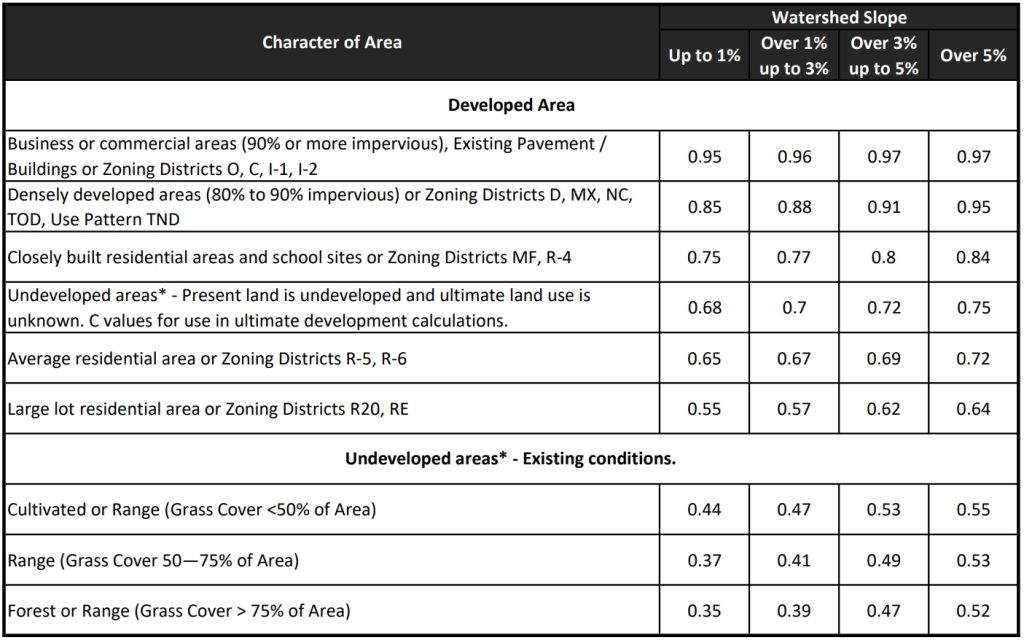QUICK HYDROLOGY
Time of Concentration (Tc) is the time it takes water to flow from the hydraulically farthest point in a drainage area to the outlet. This means the path that takes the longest time, not always the longest distance.
Weighted runoff coefficient is the average runoff value for a site with different surfaces like pavement, grass, or rooftops. It tells you how much rainwater will run off based on the mix of land types. The more hard surfaces you have, the higher the runoff.

Rainfall intensity is the rate at which rain falls over a specific period, usually measured in inches per hour (in/hr). It tells us how heavy the rain is during a storm.
When calculating peak flow using the Rational Method, we need the rainfall intensity that matches the Time of Concentration (Tc). But rainfall intensity data (like from NOAA Atlas 14) is usually given for standard durations: 5, 10, 15, 30 minutes, etc. That is why interpolation is required to determine the correct intensity.
Let’s say your calculated Tc = 7 minutes
That doesn’t exactly match a standard duration. So what do you do?
Find the two durations that surround 7 minutes:
Duration 1 = 5 minutes
Duration 2 = 10 minutes
Peak flow is the highest rate of stormwater runoff during a rainfall event. Using the Rational Method, it’s calculated with the formula Q = C × I × A, where:
C is the runoff coefficient
I is the rainfall intensity
A is the drainage area in acres
